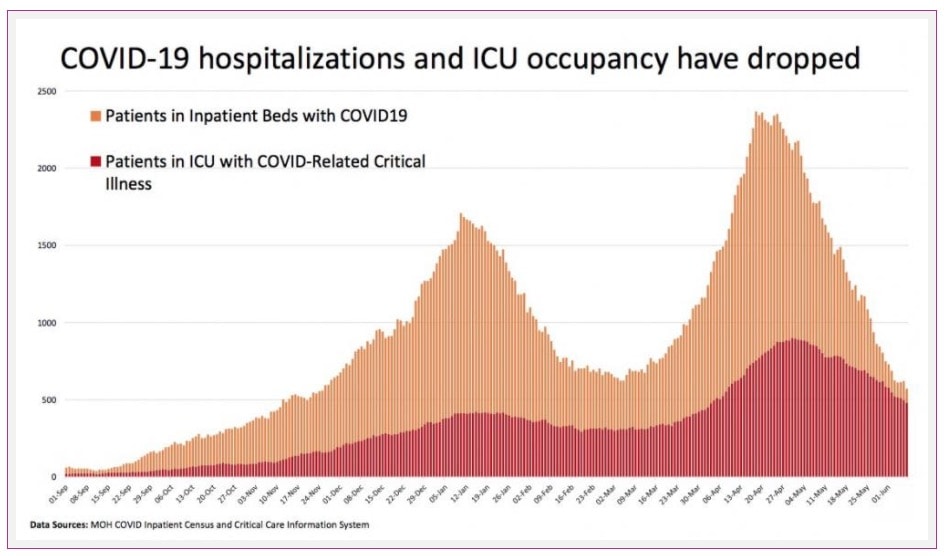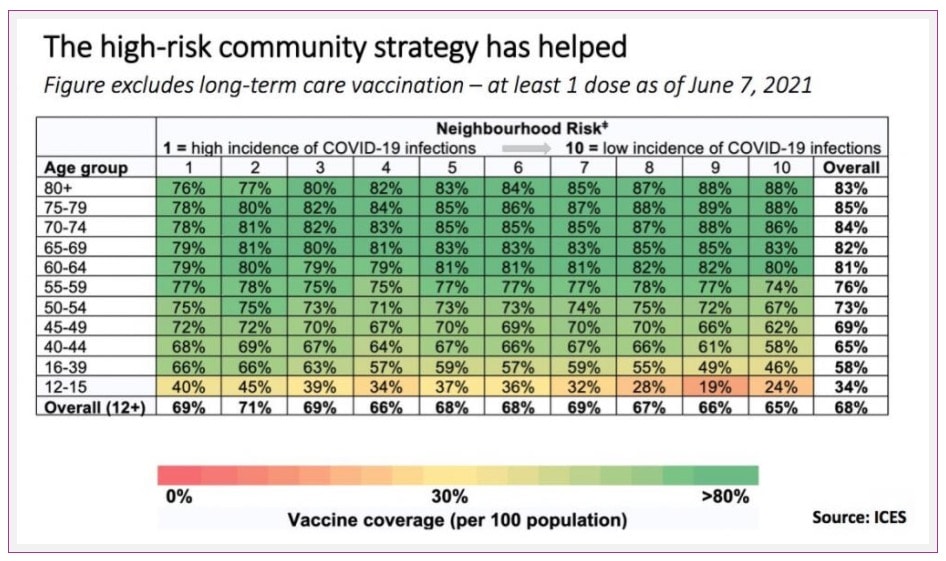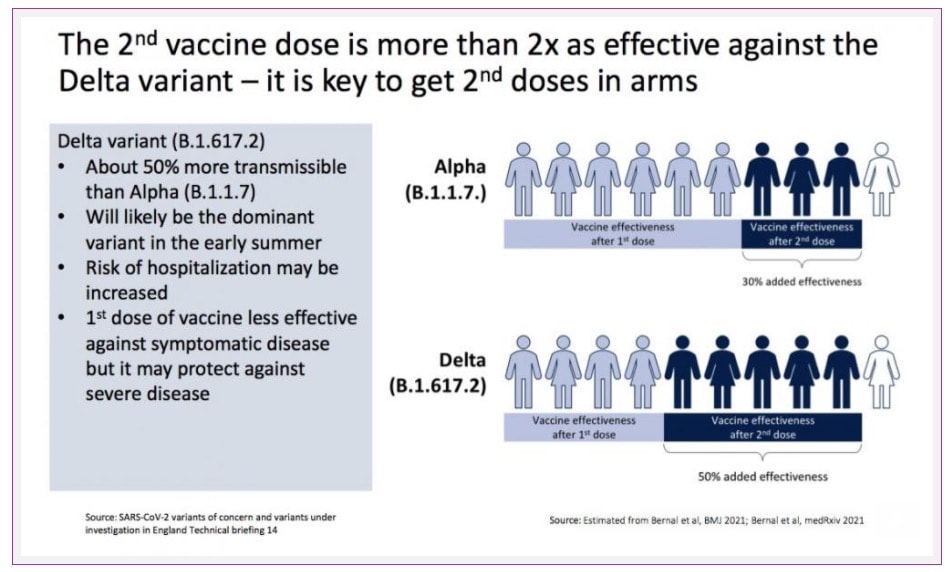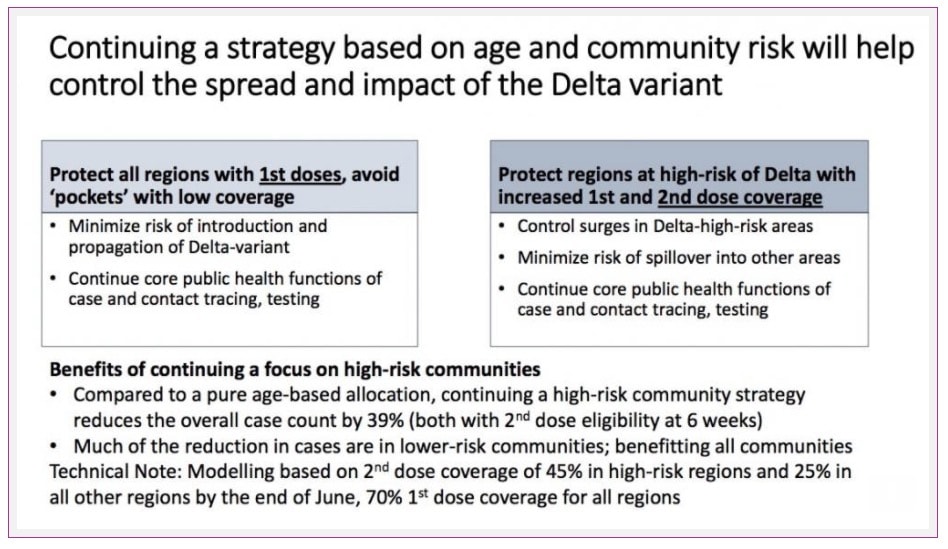Well, hello friends!
I hope you and your family had a fabulous weekend!
The sun and warm weather certainly do a fabulous job of lifting our moods!
The positive turn in COVID cases and hospitalizations in Canada certainly helps too!
As we do each week, let’s review the bad news, followed by the good news. Then, finally, I will answer the most common question of the week and end with my silver lining.
The bad news
There have been 175.1 million cases of COVID-19 reported worldwide, and more than 3.7 million have died. There have been around 1.4 million cases of COVID in Canada, with almost 26,000 deaths.
While much of Canada is faring well, we are keeping an eye on northern Ontario, where the Porcupine health unit has seen a rise in infections as they began to ease restrictions.
What is the good news?
I am so pleased that this section keeps getting longer while the bad news section shortens. Yippee!
According to the Ontario Science Advisory Table, cases, percent positivity, and hospitalizations have dropped significantly. The expectation is that cases will continue to decrease as vaccination efforts continue.


Remember this chart from weeks ago? When there was a ton of yellow and red sections. Look how far we have come! Even 34% of kids 12-15 have received at least one vaccine dose. 40% of the most vulnerable youth have received one.
It took a while to get there, but we have done a great job now!

As Ontario lifts some of the COVID-19 restrictions, stores and restaurants started to hum again. Up to four people from different households can eat together on outdoor patios, and non-essential retailers can operate at 15% capacity, with no limitations on what goods they can sell.
The provincial government has promised to loosen restrictions again in 21 days if vaccinations continue to increase and cases fall.
Not every country is faring as well, and leaders from the Group of Seven (G7) industrialized nations have announced their commitment to sharing at least one billion COVID-19 shots with countries struggling around the world. Half these doses will come from the U.S. and 100 million from the United Kingdom and Canada, respectively.
Question of the week:
When can people start to get their second doses?
Ontario is expanding COVID-19 vaccine eligibility to prevent the spread of COVID-19 variants and protect communities with the highest rates of Delta (B.1.617) variants.
Beginning today, individuals who live in Delta hot spots, such as Toronto, and received their first dose of an mRNA vaccine on or before May 9, 2021, can book their accelerated second dose appointment.
Individuals who received their first COVID vaccines via their primary physician can reach out to them to receive the second dose. Those that were given in community clinics can book their second vaccine through the provincial booking system.
Those that received the AstraZeneca vaccine as their first dose must wait 12 weeks before receiving their second dose of AstraZeneca, Pfizer, or Moderna.
Bonus question!
What is the deal with the Delta variant?
As we discussed last week, there is a new labeling system for COVID-19 variants. The B.1.617.2 strain, officially known as the Delta variant, is worrying health officials worldwide as it appears more transmissible and more dangerous. According to the Centers for Disease Control and Prevention, the Delta variant now accounts for more than 6% of samples in the U.S.
Though this may not sound too bad, the speed of growth is concerning, as this strain accounted for just 1% of samples last month.
The Delta variant sparked the large wave in COVID-19 in India and is now causing concern in the United Kingdom, where it now comprises 91% of new cases. This is likely because it is approximately “40% more transmissible” than the formerly dominant Alpha variant (B.1.1.7, first seen in the U.K.), which was already more transmissible than the original or ‘wild type’ COVID-19 strain.
According to Public Health England (PHE), the Delta variant could cause an increased risk of hospitalization compared to the Alpha strain, according to Public Health England (PHE).
Though fully vaccinated people have less risk of getting infected or getting very sick from Delta, at least ten people in Calgary who were fully immunized have been infected.
According to the Science Table, it will be essential to continue monitoring cases and identifying if any particular strains are fueling the case rate. The Delta strain will likely be the prominent strain by the Summer, and it will be critical to control spread. To avoid a four-wave, we will need to ensure as many people have the first AND second vaccine doses, and we maintain a robust testing and contact tracing program.


My silver lining
After over a year of being home from school, it is looking as though my kids will head to camp this Summer. This is HUGE for them, and for us too.
It has been an isolating year for all of us, and the idea that our kids can start to be with other kids more safely is exciting.
While I do not think we are out of the woods yet, I am hopeful for a more typical summer vacation and to return to school in September. However, please stay vigilant and continue to practice public health guidelines, even post-complete vaccination. COVID-19 may still throw some curveballs our way, and we have come too far to head back into another significant wave.
Have a fabulous week, and stay healthy!


![[Dr. Dina News] IMPORTANT UPDATE re. VIRTUAL CARE](https://drdina.ca/wp-content/uploads/2021/01/dr-dina-kulik-kids-and-virtual-care-1a-400x250.jpg)
![[Dr. Dina News] COVID-19 Vaccine for Infants and Young Children.](https://drdina.ca/wp-content/uploads/2021/04/dr-dina-kulik-kids-and-vaccines-400x250.jpg)
![[Dr. Dina News] COVID-19 Vaccine for Infants and Young Children.](https://drdina.ca/wp-content/uploads/2022/04/DRD-1-400x250.jpg)






